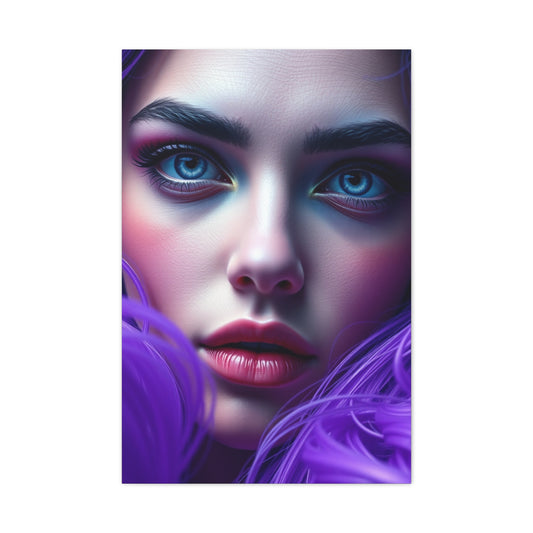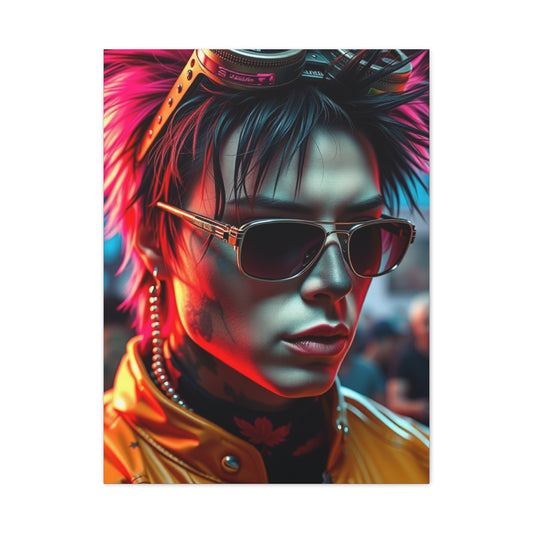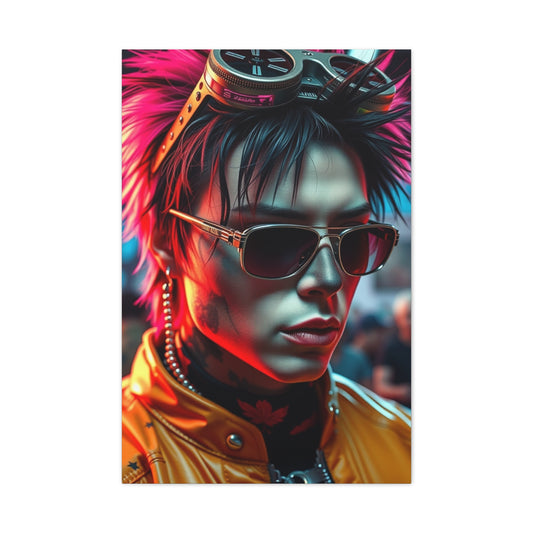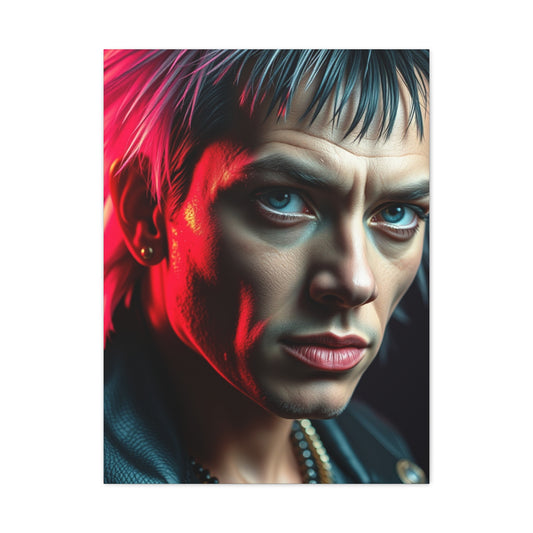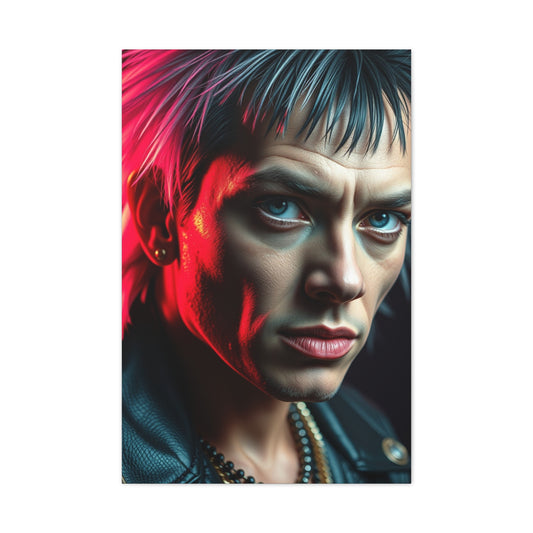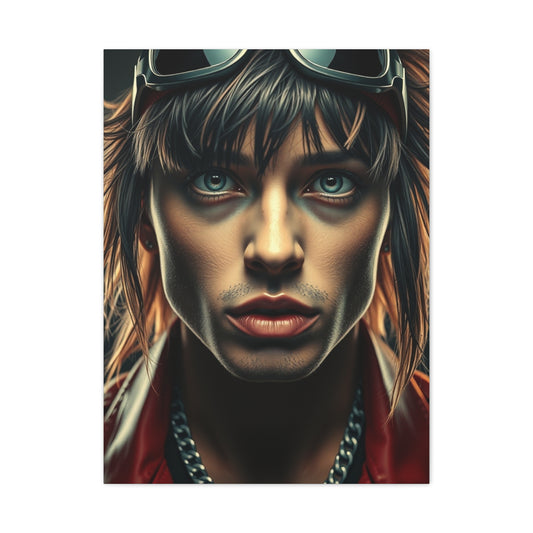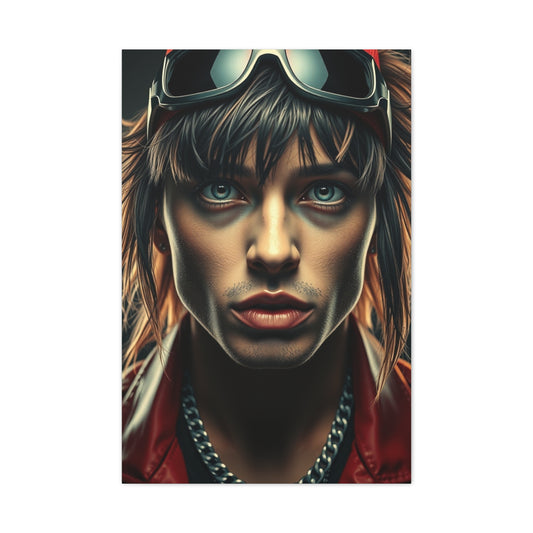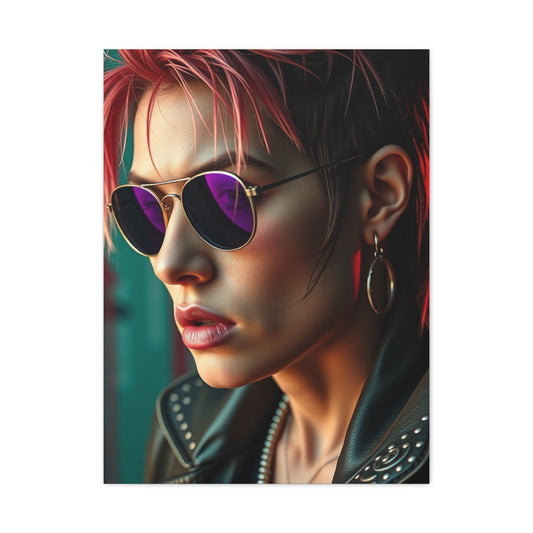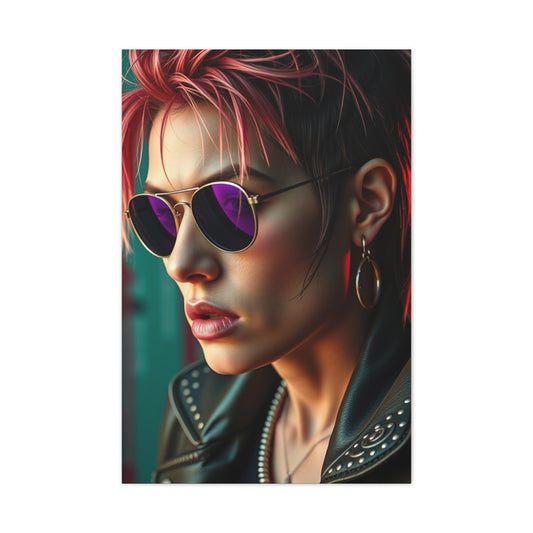If you've ever caught yourself pondering, "What really happens inside a camera when I take a photo?" — you're not alone. Photography might seem like magic, but it's rooted in fundamental science and precision engineering. In this beginner-friendly exploration, we dive deep into the inner workings of cameras, explaining each core component and shedding light on the visual symphony that takes place every time you press the shutter button. As photography continues to evolve, understanding the intricate mechanics behind the craft can empower you to create more intentional and visually captivating images.
Cameras have experienced immense transformations since their inception, evolving from rudimentary pinhole boxes into advanced digital systems packed with computational intelligence. Despite the advancements in automation and sensor resolution, the foundational principles of photography have stayed consistent: controlling light to record an image. To appreciate photography's transformative power, it's essential to explore what happens when light enters a camera, interacts with optical and electronic systems, and ultimately becomes a permanent visual record.
Light: The Cornerstone of All Images
Photography, at its core, is the refined art and science of capturing light. Every image you’ve ever admired, whether it's a poignant portrait, a sweeping landscape, or an abstract still life, is fundamentally a composite of light particles—photons—that have been meticulously harnessed and recorded. Light behaves in fascinating duality, functioning as both a wave and a particle. It travels in straight lines, each photon bearing unique wavelengths and energy levels. This dual nature allows it to refract through lenses, reflect off surfaces, and scatter in unpredictable yet beautiful patterns.
In the act of photography, a camera becomes the intermediary between the real world and the image plane. It is engineered to capture these wandering photons and translate them into structured visual representations. Whether you're using a state-of-the-art digital single-lens reflex (DSLR) camera, a mirrorless system, or even a smartphone, the principles remain unchanged. Each captured photograph is a frozen cascade of light, manipulated and reinterpreted through the mechanical and digital intricacies of the camera.
Understanding the Camera's Architecture
Though aesthetics and functionality may vary across camera brands and models, their internal architecture converges on the same fundamental components: the lens, the image sensor (or traditional film), the viewfinder, the shutter mechanism, and the image processor. Together, these elements operate in synchrony to immortalize a transient moment.
Lens: The Gateway to Vision
The lens is often described as the eye of the camera—and for good reason. It's responsible for directing and focusing incoming light onto the image sensor. Lenses vary widely in focal length, aperture, and optical construction. Prime lenses, for instance, offer fixed focal lengths and typically deliver razor-sharp images due to their simple optical layout. Zoom lenses provide greater flexibility, allowing photographers to reframe scenes without repositioning. High-end lenses utilize low-dispersion glass elements, aspherical designs, and sophisticated coatings to minimize chromatic aberrations, reduce flares, and improve clarity.
|
Related Catagories: |
The aperture within the lens controls the volume of light allowed to enter. It also influences the depth of field—the extent of sharpness from foreground to background. A wide aperture (e.g., f/1.4) produces a shallow depth of field and beautifully blurred backgrounds, ideal for portraiture. Conversely, a narrow aperture (e.g., f/16) is beneficial for landscapes, where sharpness across the entire frame is essential.
Image Sensor: The Digital Canvas
In digital photography, the image sensor acts as the canvas where light is converted into an electronic signal. There are two primary types of sensors: CMOS (Complementary Metal-Oxide-Semiconductor) and CCD (Charge-Coupled Device). Modern cameras predominantly use CMOS sensors due to their superior power efficiency, faster readout speeds, and excellent noise handling.
Sensors come in different sizes—full-frame, APS-C, and micro four-thirds being the most common. Sensor size directly affects the field of view and the performance of the camera in low light. Larger sensors typically produce images with richer dynamic range and less digital noise. Pixel density, measured in megapixels, also plays a role in image resolution but isn't the sole determinant of image quality. The size and arrangement of the individual photosites (light-sensitive elements) influence how well the sensor interprets light nuances.
Shutter Mechanism: Sculpting Time
The shutter is a vital component that regulates how long the sensor is exposed to light. Shutter speed, measured in fractions of a second, determines how motion is rendered in an image. A fast shutter (e.g., 1/4000s) can freeze a hummingbird in flight, while a slow shutter (e.g., 30s) can create dreamy, ethereal trails of stars across the sky.
There are different types of shutters, including mechanical shutters, electronic shutters, and hybrid versions. Mechanical shutters use physical curtains that open and close to expose the sensor. Electronic shutters use a sensor-based method to capture light, offering silent operation and faster frame rates. However, they may introduce rolling shutter distortions in fast-moving scenes. Understanding which type of shutter to use can significantly influence the final aesthetic of a photo.
Viewfinder: Framing the Vision
The viewfinder allows the photographer to preview and compose their shot. Optical viewfinders, found in DSLR cameras, offer a real-time, unaltered view through the lens using a mirror and prism system. In contrast, electronic viewfinders (EVFs), common in mirrorless cameras, display a digital representation of the scene as interpreted by the sensor. EVFs can overlay helpful data such as histograms, focus peaking, and exposure simulation, which can assist in precise composition.
Some photographers still prefer the tactile engagement and authenticity of an optical viewfinder, particularly in high-speed or unpredictable environments where electronic lag may be a concern.
Image Processor: The Silent Conductor
Hidden beneath the physical layers of a camera lies the image processor—an unsung hero responsible for interpreting sensor data into a usable image. This processor handles tasks like white balance correction, noise reduction, tone mapping, color interpolation, and image compression. Modern processors also enable burst shooting, 4K video capture, and real-time autofocus tracking.
Just like a conductor interpreting a musical score, the image processor orchestrates the transformation of raw sensor data into images that align with the photographer’s creative vision. A well-engineered processor can mean the difference between a good camera and a great one, especially in demanding conditions.
The Symphony of Photonic Capture
When these components work in unison, they perform a complex ballet of physics and engineering. The lens guides photons to the sensor; the shutter allows them passage for a precise interval; the sensor translates them into electrical impulses; and the processor refines them into a final image. Each photograph is, therefore, an intricate mosaic of time, light, and design.
Mastery of photography involves more than just knowing what each part does. It’s about understanding how these parts interact, how they respond under varying conditions, and how they can be manipulated to create images that evoke emotion and meaning. The interplay of aperture, shutter speed, ISO sensitivity, and focal length becomes the painter’s palette, and the photographer, the artist wielding light as a brush.
In a world saturated with visuals, crafting compelling photographs demands not only technical acumen but also a sensitivity to light’s subtle dances—how it glows at golden hour, how it casts deep shadows in harsh sunlight, or how it delicately diffuses on a misty morning. The camera, no matter how advanced, is merely a vessel; it is the understanding of light and the architecture that captures it that defines the artistry of photography.
The Lens: The Gateway to Precision Imagery
The intricate journey of light within the realm of photography begins at a critical juncture: the camera lens. This fundamental component acts as the conduit through which reality enters the photographic system. More than just a piece of glass, a lens is a finely engineered optical instrument composed of multiple elements meticulously shaped and aligned to manipulate the direction, intensity, and quality of incoming light. Whether capturing a sweeping horizon or the minute details of an insect's wing, the lens defines the clarity, dimensionality, and fidelity of the final image.
Inside the anatomy of a lens reside convex and concave glass elements—each cut, coated, and arranged with scientific precision. These elements are strategically grouped in configurations designed to correct a host of optical imperfections. Chromatic aberrations, where different wavelengths of light fail to converge at a single focal point, are mitigated through special low-dispersion glass. Distortion, such as barrel or pincushion effects, is neutralized by aspherical elements. Every tweak in curvature or material composition plays a pivotal role in determining how accurately the lens can render a scene.
The complexity of lens design goes far beyond simple magnification. Lenses serve as translators, converting a three-dimensional world into a two-dimensional image with as little compromise as possible. Their capacity to manage flare, ghosting, and internal reflections is enhanced by proprietary coatings, often invisible to the naked eye. These coatings increase light transmission, reduce glare, and elevate color fidelity—factors that can make or break an image’s professional quality.
Focal Length and Field of View
Among the primary specifications that define a lens is its focal length, typically measured in millimeters. This figure determines both the magnification of the subject and the breadth of the scene captured within the frame. Focal length, in essence, shapes the viewer's perspective, influencing the storytelling potential of an image.
Wide-angle lenses, often ranging between 10mm to 35mm, encompass an expansive field of view. They excel at capturing large-scale scenes such as cityscapes, sweeping mountains, and interior architectural details. These lenses are especially valuable in tight spaces where stepping back is not an option. However, they may also introduce perspective exaggeration, where foreground elements appear disproportionately large relative to the background, creating dynamic and immersive compositions.
On the other end of the spectrum lie telephoto lenses, spanning focal lengths from 85mm to over 600mm. These lenses are designed to bring distant subjects into sharp focus, compressing the visual space between foreground and background. They are indispensable tools for wildlife, sports, and portrait photography, where subject isolation is critical. Telephoto lenses also flatten perspective, lending a unique aesthetic character to the image.
Standard prime lenses, typically around 50mm on a full-frame camera, offer a field of view that closely mimics human sight. These lenses are lauded for their optical simplicity, fast apertures, and natural rendering of depth and proportion, making them versatile for street, travel, and documentary photography.
Aperture Control and Depth Effects
Embedded within the core of every lens is the aperture mechanism—a multi-bladed diaphragm that controls the size of the opening through which light enters. The aperture is a critical variable in the exposure triangle, working in concert with shutter speed and ISO sensitivity. But its influence extends far beyond illumination.
The aperture directly affects depth of field, or the range within the frame that appears acceptably sharp. A wide aperture, such as f/1.2 or f/2.0, yields a shallow depth of field, creating a creamy, defocused background known as bokeh. This effect is highly sought after in portraiture, where the subject is isolated against a soft, aesthetically pleasing backdrop. The shape and quality of the bokeh are influenced by the number and curvature of aperture blades, with rounded blades typically producing more circular and harmonious blur.
Conversely, narrow apertures like f/11 or f/16 maximize the zone of focus, making them ideal for landscape and macro photography where detail retention from near to far is crucial. However, stopping down too far may introduce diffraction, a phenomenon that reduces overall sharpness due to the wave-like nature of light.
Aperture also impacts the amount of light reaching the sensor, influencing shutter speed and ISO requirements. In low-light conditions, a fast lens with a wide maximum aperture can be a game-changer, allowing for handheld shots without excessive noise or motion blur.
Lens Quality and Performance Considerations
Lens sharpness is often used as a benchmark of quality, but it's only part of the equation. Contrast, color rendition, flare resistance, focus speed, and build quality all contribute to a lens's real-world usability. Professional-grade lenses often feature weather-sealing, robust metal housings, and internal focusing systems that maintain balance during operation.
Autofocus performance, driven by internal motors like ultrasonic or stepping motors, varies between lenses and plays a vital role in fast-paced environments. Silent and accurate autofocus is essential for both still photography and video recording, particularly in genres where discretion and precision are key.
Another often overlooked factor is the minimum focusing distance. Macro lenses, for example, allow photographers to focus extremely close to their subjects, revealing details invisible to the unaided eye. This capability, combined with a true 1:1 magnification ratio, transforms everyday objects into surreal landscapes of texture and form.
Creative Possibilities and Artistic Expression
Different lenses yield different visual signatures, and understanding these nuances allows photographers to shape the emotional tone of an image. A fisheye lens might exaggerate reality with dramatic distortion, while a tilt-shift lens corrects perspective distortions in architectural photography. Specialty lenses like soft-focus or mirror lenses open up avenues for experimental work, pushing the boundaries of conventional aesthetics.
Moreover, manual focus lenses, while requiring more deliberate operation, offer a tactile connection to the art of photography. Many enthusiasts and professionals favor them for their precision and reliability, especially in controlled environments.
Autofocus Systems and Manual Precision
In the modern landscape of photography, precision and speed are non-negotiable, and autofocus systems have evolved into complex, highly efficient technologies that play a crucial role in shaping photographic outcomes. Contemporary lenses are embedded with sophisticated autofocusing mechanisms, often incorporating ultrasonic motors (USM), stepping motors (STM), or linear drive actuators to deliver swift, near-silent performance. These technologies allow photographers to maintain fluid subject tracking and achieve pinpoint sharpness, especially when dealing with dynamic environments like sports arenas or wildlife reserves.
Autofocus systems rely heavily on either phase detection or contrast detection methodologies—or, in hybrid systems, a synergistic combination of both. Phase detection works by splitting incoming light into two separate images and adjusting focus until those images converge. This technique is exceptionally quick and reliable, especially in well-lit conditions. Contrast detection, on the other hand, analyzes the sharpness of the image directly on the sensor and adjusts the focus until maximum contrast is achieved. While slightly slower, it excels in scenarios requiring high precision, such as macro or studio photography.
The advent of on-sensor phase detection in mirrorless systems has further closed the gap between accuracy and agility. With thousands of focus points distributed across the image plane, cameras can now achieve near-instantaneous subject recognition and tracking, even in challenging lighting conditions or with fast-moving targets. Eye detection and face detection autofocus technologies add another layer of intelligence, ensuring consistently sharp results in portraiture and documentary photography.
Despite these technological leaps, manual focus remains indispensable in certain genres. Fields like astrophotography, landscape photography, and high-end product shoots demand meticulous control over focal planes—something that even the most advanced autofocus systems cannot always guarantee. In such instances, manual focus allows for deliberate and finely tuned adjustments, especially when using focus magnification tools or peaking overlays that highlight edges of contrast.
High-quality manual focus lenses, often favored by cinematic and legacy glass users, offer buttery-smooth focusing rings and long throw distances, giving tactile feedback and control that autofocus simply can’t replicate. This deliberate interaction between photographer and lens adds a contemplative rhythm to the photographic process, fostering a deeper connection to the subject and medium.
Stabilization Technologies
Capturing sharp images is not solely a matter of focus. Minute vibrations—often imperceptible to the human hand—can render even the most carefully composed image unusable, especially when using slow shutter speeds or long focal lengths. That’s where stabilization technologies come into play, acting as silent guardians against motion-induced blur.
Optical Image Stabilization (OIS) is built directly into the lens and works by shifting one or more internal glass elements to counteract camera movement. These movements are detected using gyroscopic sensors that interpret both angular and linear motion across multiple axes. The corrective adjustments happen in real-time, allowing for sharp captures even when the photographer is shooting handheld in low-light scenarios or without a tripod.
|
Related Catagories: |
In-Body Image Stabilization (IBIS), found in many mirrorless camera systems, functions at the sensor level. Here, the camera’s image sensor physically shifts in response to detected movement, providing stabilization regardless of the lens attached. This system is particularly advantageous for users with older manual lenses or optics lacking built-in stabilization, as it democratizes shake reduction across the board.
Many modern cameras combine both OIS and IBIS in a hybrid stabilization setup, offering up to 7 or even 8 stops of compensation. This means a photographer can shoot at significantly slower shutter speeds without visible motion blur, dramatically increasing flexibility and creative possibilities. Stabilization technologies also enhance video work, enabling smoother footage and more stable handheld shots, which is crucial for vlogging, cinematic production, and documentary storytelling.
Camera Mounts and Compatibility
A lens is only as functional as its interface with the camera body. This is managed through the camera mount, a mechanical and electronic interface that secures the lens to the body and facilitates real-time data transmission. These mounts vary by brand and system, with major players including Canon RF, Nikon Z, Sony E, Fujifilm X, Micro Four Thirds, and the cross-brand L-Mount Alliance.
Mount design is not merely structural; it defines electrical connectivity, flange distance (the space between the lens mount and the image sensor), and compatibility with specific autofocus and stabilization technologies. In mirrorless systems, shorter flange distances allow for more compact lens designs and facilitate the use of adapters. This architectural evolution has made it possible for photographers to repurpose vintage and DSLR-era lenses on modern mirrorless bodies without significant loss in functionality.
Many of today’s lens adapters include electronic contacts that preserve autofocus, aperture control, and EXIF data transfer, allowing older lenses to behave nearly identically to their native counterparts. Advanced adapters even include built-in control rings, customizable buttons, and firmware upgrade capabilities to enhance system integration. For professionals and hobbyists alike, this adaptability expands creative options and unlocks access to a wide array of optics that might otherwise remain shelved.
Third-party lens manufacturers have also embraced these mount systems, producing high-quality, affordable alternatives that integrate seamlessly with mainstream camera brands. These lenses often offer unique focal lengths, distinctive rendering styles, or cost-effective entry points for beginners. Mount standardization and reverse engineering have made the lens market richer and more diverse than ever before.
The Convergence of Innovation and Legacy
The fusion of autofocus sophistication, stabilization technologies, and versatile mount systems reflects the broader evolution of photographic tools toward modularity, performance, and user empowerment. Today’s lenses are not only optically superior but also computationally intelligent, interfacing with the camera’s onboard processor to perform real-time corrections, predictive focusing, and adaptive stabilization.
This convergence does not replace traditional craftsmanship but rather enhances it. Manual precision remains as vital as ever in disciplines requiring deliberate control. Stabilization allows for new forms of visual expression, while mount flexibility preserves the legacy of classic optics in a digital age. Each advancement adds another dimension to the photographer’s toolkit, enabling more nuanced storytelling through imagery.
In practical terms, the synergy between lens and body components has made photography more accessible without diluting its depth. Whether you're chasing fleeting wildlife, crafting cinematic vignettes, or meticulously capturing the surface of the moon, modern lens systems offer the precision, intelligence, and adaptability to bring your vision to life with uncompromising quality.
Inside the Camera Body: Where Light Meets Silicon
After light journeys through the lens system—shaped, focused, and filtered by optical elements—it proceeds into the heart of the camera body, where it is ultimately recorded. This passage marks the transformation of luminous energy into digital information, a metamorphosis that lies at the crux of modern imaging. The camera's internal structure is a complex convergence of mechanical precision and digital processing, engineered to manipulate this light with meticulous control.
In DSLR cameras, the path of light is first redirected by a reflex mirror, a movable component that sits at a 45-degree angle behind the lens mount. When the shutter release is engaged, the mirror flips upward, clearing the way for light to strike the image sensor or film. The mirror mechanism allows for optical viewfinder functionality, which delivers a true-to-life, real-time preview of the scene without delay or digital processing.
In contrast, mirrorless camera systems eliminate this mechanical complexity. Light bypasses the mirror and travels unimpeded directly to the image sensor. This streamlined pathway reduces the camera's bulk, decreases vibrations caused by mirror movement, and enables continuous live feedback via the electronic viewfinder or rear LCD screen. By removing the mirror assembly, mirrorless cameras also enhance focus precision, particularly through on-sensor phase detection points and contrast-based evaluations.
At the core of this optical funnel lies the image sensor—typically a CMOS chip—tasked with converting photons into electronic signals. Covered by a microlens array and color filter matrix (often a Bayer filter), the sensor differentiates incoming light into red, green, and blue channels. Each photosite collects light data, which is then digitized and processed into a coherent image. The size and resolution of the sensor greatly influence image quality, depth of field, dynamic range, and low-light performance.
The Viewfinder: Framing Reality
Composing an image is not merely about pointing the camera in the right direction—it’s about seeing the scene through a curated frame that represents the final result. The viewfinder plays a critical role in this process by serving as the photographer’s eye into the world being captured.
In DSLR systems, the optical viewfinder (OVF) delivers an unprocessed visual experience. Light enters through the lens, strikes the reflex mirror, and is bounced upward into a pentaprism or pentamirror assembly. This system then redirects the light into the photographer’s eye, preserving the natural characteristics of the scene. The advantage of OVFs lies in their clarity, zero-lag response, and reliability in bright environments.
Mirrorless cameras employ electronic viewfinders (EVFs), which offer an entirely different approach. These miniature displays provide a live feed from the camera’s image sensor, showcasing the exact exposure, white balance, and focus in real-time. Advanced EVFs incorporate overlays such as histograms, electronic level gauges, focus peaking highlights, and zebra patterns for exposure warnings. This digital interface empowers photographers with unprecedented control over their compositions before the shutter is ever pressed.
Some hybrid cameras even offer a combination of both systems—called hybrid viewfinders—allowing users to switch between optical and electronic modes as the situation demands.
Shutter Mechanics: Dictating Exposure Time
Capturing a photograph involves a precise orchestration of time, light, and sensitivity. Central to this equation is the shutter mechanism, which dictates how long the image sensor is exposed to incoming light. Shutter speed is quantified in fractions of a second—such as 1/8000s for high-speed action or 30s for long exposures under night skies.
Mechanical shutters operate using two light-blocking curtains. When a photo is taken, the first curtain slides open to expose the sensor, followed by the second curtain which closes the exposure. This method provides dependable results and maintains image quality under a wide range of conditions. However, it can introduce minute vibrations, especially at slower speeds, which may affect sharpness if not stabilized.
The electronic shutter offers a modern alternative, especially prevalent in mirrorless systems. Rather than relying on physical movement, the camera begins and ends the exposure by activating and deactivating the sensor electronically. This allows for completely silent operation and higher burst rates, useful in discreet settings such as wildlife observation or street photography.
However, electronic shutters are not without drawbacks. They often introduce rolling shutter artifacts—distortions that occur when fast-moving subjects or panning motions are captured. This happens because the sensor reads image data line by line instead of all at once, resulting in skewed geometries. Understanding these characteristics enables photographers to make informed choices based on subject movement and ambient light.
Some advanced models now feature global shutters, which expose the entire sensor simultaneously, eliminating rolling shutter effects entirely. While currently more common in high-end cinema and industrial applications, this technology is gradually making its way into mainstream still photography.
Sensor and Image Path: Where Data Becomes Visual Story
Once the shutter mechanism has fulfilled its duty, the sensor receives the full spectrum of incoming light. This raw data must be interpreted, cleaned, and reconstructed into a viewable image—a task performed by the camera’s image processor. Acting as the brain of the system, this processor performs noise reduction, demosaicing, tonal adjustments, and color calibration in real time.
High-end image processors also enable additional functions like 4K and 8K video recording, in-camera HDR rendering, and intelligent autofocus tracking. Features such as real-time subject recognition, face detection, and scene analysis are all rooted in the processor’s ability to interpret and apply complex algorithms to sensor input.
Advanced processors handle multiple data streams simultaneously, enabling rapid shooting speeds and minimal buffer times. They are optimized for energy efficiency as well, balancing power consumption with performance—particularly crucial in compact mirrorless designs.
Connectivity Within the Camera Body
Internally, the camera body is a sophisticated nexus of communication channels. The lens communicates with the sensor, viewfinder, and processor via electronic contacts located on the lens mount. These contacts relay real-time adjustments for autofocus, aperture changes, image stabilization, and even lens-specific corrections such as vignetting or distortion compensation.
Modern camera bodies often include modularity that supports firmware updates, allowing manufacturers to improve performance post-purchase. Dual card slots, customizable dials, and weather-sealed construction further enhance the user experience, especially for professional and field use.
Image Sensor: Translating Light into Digital Signals
The image sensor is the beating heart and perceptual brain of every digital camera. It is the component responsible for converting photons—particles of light—into measurable electrical signals. This microscopic marvel is composed of millions of individual photosites, or pixels, which act as receptive wells for light. As photons strike the sensor, each pixel accumulates an electrical charge proportional to the intensity of light received. This process of photoelectric conversion underpins all digital imaging, transforming fleeting light into enduring digital representations.
Contemporary image sensors overwhelmingly favor CMOS (Complementary Metal-Oxide-Semiconductor) technology. Compared to their older CCD (Charge-Coupled Device) counterparts, CMOS sensors offer significant advantages in energy efficiency, data readout speed, and integration with on-chip functions. These traits make CMOS sensors ideal for high-speed photography, 4K and 8K video recording, and low-light shooting—all while conserving battery power.
Layered atop the sensor is a color filter array—most commonly the Bayer filter—which enables color differentiation. This matrix assigns alternating red, green, and blue filters to each pixel, with green appearing most frequently due to the human eye's heightened sensitivity to that spectrum. Advanced sensors now also include back-side illumination (BSI), which places wiring behind the photosites to allow more light to reach each pixel. This increases sensitivity and enhances low-light performance. Additionally, stacked sensor designs separate the photodiodes from the processing circuitry, enabling faster data readout, improved autofocus responsiveness, and minimized rolling shutter effects.
Sensor Sizes and Their Impact
Sensor size is a defining factor in a camera's imaging capabilities. It influences field of view, depth of field, dynamic range, and low-light performance. Full-frame sensors, measuring 36mm by 24mm, are modeled after traditional 35mm film and offer a wide field of view with shallow depth of field characteristics. These sensors are prized for their superior noise control, higher pixel count potential, and broader dynamic range, making them a top choice for professional photographers and videographers.
APS-C sensors are smaller, typically around 22mm by 15mm, and introduce a crop factor—usually about 1.5x or 1.6x—when compared to full-frame sensors. This extends the effective focal length of lenses, which can be advantageous for wildlife, sports, and telephoto applications. However, the reduced sensor area can limit low-light performance and result in slightly deeper depth of field at equivalent aperture settings.
Micro Four Thirds sensors are even more compact, measuring approximately 17mm by 13mm, and feature a 2x crop factor. While they don't offer the shallow depth of field or low-light performance of larger sensors, their compact size allows for smaller camera bodies and lenses. These systems appeal to travel photographers and those seeking lightweight kits without sacrificing image quality.
At the pinnacle of sensor technology are medium format sensors. Larger than full-frame, these sensors deliver unrivaled resolution and tonal depth. They are favored in commercial, fashion, and fine art photography, where maximum image fidelity is non-negotiable. The expansive surface area of medium format sensors captures more light, enables subtler transitions in tone and color, and allows for enormous prints with remarkable detail retention.
ISO Sensitivity and Noise Performance
ISO sensitivity represents the sensor's responsiveness to light. Lower ISO values such as ISO 100 or 200 preserve the highest level of detail and color accuracy, making them ideal for well-lit scenes or tripod-supported exposures. Higher ISO values, like ISO 6400 or even ISO 102400, amplify the sensor’s signal to allow for usable exposures in dark environments.
However, increasing ISO also amplifies digital noise—random speckles of color or luminance inconsistencies caused by signal interference. The quality of a sensor’s high-ISO performance depends on pixel size, sensor architecture, and the efficiency of noise reduction algorithms.
Many modern sensors incorporate dual native ISO technology, which optimizes performance at both low and high sensitivity levels. This dual amplification circuit system reduces noise and enhances image quality across the entire ISO spectrum, delivering cleaner files for night photography, indoor events, and astrophotography.
Analog-to-Digital Conversion and Image Processing
Once photons are collected and transformed into analog electrical signals, the data must be digitized through analog-to-digital converters (ADCs). These embedded processors translate voltage variations into binary code, creating a numerical map of the light captured at each pixel. The precision of this conversion, often expressed as bit depth, determines how much tonal information is preserved.
The resulting data is then funneled into the camera’s image processing engine. Here, complex algorithms execute tasks such as demosaicing (reconstructing a full-color image from Bayer-filtered data), white balance adjustment, color interpolation, sharpening, lens correction, and file compression. This real-time processing determines the look and technical fidelity of the final image.
Photographers who shoot in RAW format retain all this sensor data in its minimally processed state. This allows for extensive control during post-processing, such as recovering highlights, adjusting exposure, or fine-tuning color temperature. By contrast, JPEG files are pre-processed in-camera and compressed, discarding some of the tonal and color information in exchange for smaller file sizes and immediate usability.
Additional Elements That Shape Image Quality
Several other internal systems contribute significantly to the image quality rendered by the sensor and processor:
-
White Balance: This setting adjusts the camera's color interpretation to compensate for different lighting conditions. Whether under the warm glow of tungsten bulbs or the cool tint of overcast skies, proper white balance ensures accurate color rendition.
-
Metering Modes: These evaluate the light distribution across the frame to help calculate optimal exposure. Matrix or evaluative metering considers the entire scene, center-weighted metering emphasizes the central region, and spot metering focuses on a small area—ideal for high-contrast situations.
-
Burst Shooting and Buffer Capacity: Fast-moving action demands rapid-fire capture. Burst rates (measured in frames per second) and buffer memory determine how many high-resolution images can be taken in quick succession without stalling the camera.
-
Dynamic Range: This measures the sensor’s ability to retain details in both bright highlights and deep shadows. A high dynamic range allows for nuanced exposures and reduces the risk of clipping or banding in contrast-heavy scenes.
-
Bit Depth and Color Sampling: Bit depth refers to how finely the sensor records color gradations. A 14-bit RAW file, for example, can distinguish over 16,000 tonal values per channel, offering smoother transitions and more editing headroom. In video, color sampling like 4:2:2 captures more chromatic data, critical for color grading in post-production.
The Digital Darkroom: Enhancing the Raw Image
Post-processing has become an integral part of modern photography. Software such as Adobe Lightroom and Capture One allow photographers to refine exposure, contrast, white balance, and sharpness. Non-destructive editing means original files remain intact while edits are applied as overlay instructions. Color grading, selective adjustments, and noise reduction techniques can elevate a basic capture into a compelling visual story.
Empowering Creativity Through Understanding
Armed with a deeper understanding of the inner workings of cameras, photographers can move beyond guesswork and embrace deliberate creativity. Recognizing how each setting influences the final image enables intuitive control over artistic expression. Whether composing a serene landscape, capturing the dynamism of street scenes, or exploring abstract macro worlds, technical knowledge becomes the bedrock for imaginative exploration.
Conclusion: The Marriage of Science and Art
Photography is a harmonious blend of optics, electronics, and emotion. Each photograph reflects a momentary interplay between light, lens, and vision. From the first flicker of light entering the lens to the final image saved on a memory card, the journey is one of transformation—from photons to pixels. By comprehending the meticulous dance of mechanical and digital components, beginners can elevate their craft, forging images that resonate, inform, and inspire. Embrace the mechanics, master your gear, and you’ll not only take better photos—you’ll create images with intention, impact, and soul.











